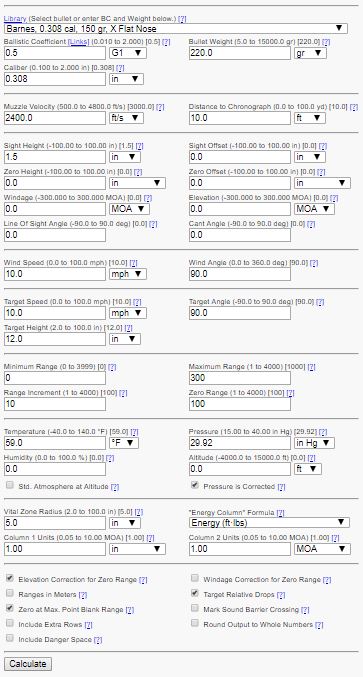George is a member of our Facebook Group and has written for us before.
Col. Townsend Whelen opined that “Only accurate rifles are interesting.” I mostly agree with him on that, and have dedicated a good portion of my adult life in the same job field as the good Colonel and hope that I can pass on a few skills that will help you wring out every last bit of accuracy that you need from your rifle.
Disclaimer
Please note that varmint hunters, long range competitors, and bench rest shooters aren’t the target of this article; this is aimed at someone who needs to make a shot fairly accurately and fairly quickly. That could be a rancher pulling the trigger on a coyote or wolf, or a deer hunter trying to fill a chest freezer with venison. This article is focused on a more practical form of accuracy to set up a utility rifle for best shooting without having to do any adjustments to scope nobs or your iron sights before you take a shot.
Terminology
In my world, precision means how repeatable the rifle/load combination is (in terms of making small groups) but accuracy is how well a shooter uses the rifle/load combination to put a hole in something downrange where it needs to be (whether on target or game).
A modern bottlenecked rifle cartridge shot from a rifle with a 16” or longer barrel is generally going to have ballistics that allow the projectile to go further than the average shooter is likely to engage. Point blank is the range at which a shooter does not have to compensate for ballistic drop, so the trick is to maximize your max point blank range options for your rifle/load combination.
Zero Like a Hero
- Decide on a load.
- Decide how large of a circle you want your rifle groups to be at max distance with that load.
- Zero your rifle at 100 yards.
- Shoot five shots for five groups, measure the group size, and average them.
- You now have a really good idea how your rifle will group at distance.
- Apply your load to a ballistic calculator like JBM Ballistics and plug your ballistics numbers into it.
- Set the max distance to 300 or 400 (yards or meters, depending on what you are comfortable using), make sure you set the range increment to 10, and at the bottom choose a “vital circle” diameter (stock number is 5”) and check the “zero at max point blank range” option.
- Your output will be a ballistics table that is highlighted in green when your bullet is within 5” of your line of sight, above or below. I put in the data for a 150gr flat nosed hunting bullet at 2,400 fps from the muzzle, one of the most common .30-30 loads in existence. As you can see, this sedate old hunting round has a “point blank range” of 270 yards.
- Take your 100 yard group size, divide that by 10 to get your spread per 10 yards, and multiply by your max PBR.
- If our .30-30 had a 4” group at 100, then it would be 0.4” at 10, and multiplying that by 27 gives us an expected group size of 10.8 inches of spread at max point blank range. That’s hitting a dinner plate at more than two and a half football fields if you do your part.
- If it shot a 3” group at 100 yards, that’s 6” at 200 and 8” at 250.
- If it shot a 2” group at 100 yards, that’s 4” at 200, and 6” at 300, so a 2” rifle/load combination can take full advantage of a 5” vital zone on the target all the way out to the max point blank range and still be inside of that 8” dinner plate.
- But notice that even the 4” grouping rifle could shoot a dinner plate at 200 yards using this method to zero a rifle.
- So what do you do if your target is smaller than a dinner plate? Well you have to figure out how big of a circle you are willing to accept. If your target was an 8” circle, then you already know that you can’t shoot beyond 200 yards with the accuracy of that load in your rifle, so you go back to the ballistics calculator and start shrinking the Vital Zone number until it gets down to 200 yards.
- In our case, that vital zone gets whittled down to 2.4” and the max PBR becomes 200 yards. There are formulas you can use to figure this out, but unless you are a math geek it’ll be much faster just to take a stab using the ballistics calculator and adjust yourself in to the correct answer.
- Your ballistic table will let you know how high you need to be at 100 yards to take advantage of your max point blank range zero.
- Use a ruler or tape measure and put a mark that far above your aiming point, and verify.
- Now your rifle is ready to be as accurate as you are, out to the max point blank range of the ammunition you are running through it.
“Shooting a rifle accurately is easy; just align the sights perfectly to the target and keep them there while you pull the trigger.” – A running joke for service rifle shooters that I first heard from an AMU instructor at Fort Benning. Shooting accurately is actually pretty difficult, because it’s really hard to stay still.
I hope this has been helpful, as at the end of the day I want you to have confidence in your gear and be able to take the shots that fill your freezer with venison -- or get you through an Appleseed with a Rifleman patch at the end.





No comments:
Post a Comment